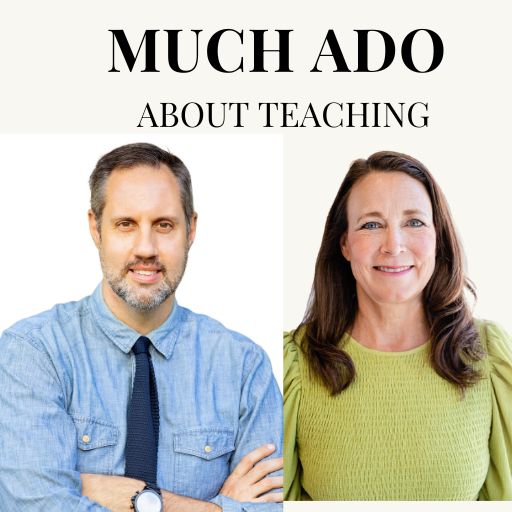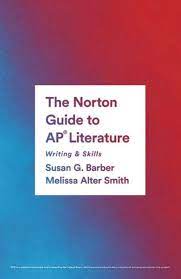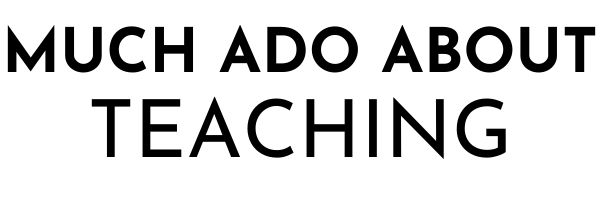Our first poetry unit is Counting Descent by Clint Smith and our first official lesson on structure was this week. I LOVE teaching structure because it’s one of the few concepts that students have very little exposure to or experience with in their prior lit classes. If they have had experience with structure, few know how to move beyond identification of structural elements to how structure can reinforce thematic ideas in a poem.
Why is structure important?
- Structure provides the framework for the events and details of the story to unfold. This framework affects the way a reader makes meaning of the text.
- Structure offers a way into the text and understanding structure can help students make meaning of the text.
- Understanding structure requires higher level thinking skills and is one of the most difficult concepts in literary analysis.

We begin considering this image. When we look at buildings, we notice the facade – the outward facing parts like the stone work, glass, and architectural elements. However, just as important to the building, and what we don’t initially see, is the framework supporting the outward facade – the steel beams and concrete beams and foundation.
The same is true when reading a poem. We are drawn to figurative language and imagery because those elements jump out when initially read a poem, but when we step back and look deeper into a poem, the structural elements are just as important and can provide keys into developing an interpretation of the poem. Mature readers should consider structure.
Here are four areas of emphasis I review in class to position students to consider structure:
1 – Grouping of words (enjambment, stanzas)
One of my favorite quick and easy lessons for enjambment and stanzas uses Gwendolyn Brook’s poem “We Real Cool.” I give it to the students written in prose style and ask them to work in groups to divide into stanzas.
We real cool. We left school. We lurk late. We strike straight. We sing sin. We thin gin. We jazz June. We die soon.
After students have worked for a few minutes, we listen to Brook read the poem and the light bulbs start coming on. Then we look at the poem laid out on the page and I ask the following questions: Why might Brooks end/start the lines this way? Why might Brooks break the stanzas this way?

The lesson essentially teaches itself at this point. Students carefully consider and passionately argue about the emphasis being “We” at the end or the verb at the beginning of lines. I invite them to consider the emphasis of both of these ideas as opposed to one over another. We discuss the couplets and the significance of the two connected verbs. Sometimes we end by watching this video:
A more lengthy lesson would include giving students a longer poem without the lines broken into stanzas. Consider “Those Winter Sundays” by Robert Hayden which I use during our Fences unit. Here’s what we do:

- Give students a hand out of the poem with all stanza breaks removed.
- Student work in pairs or small groups to group lines into stanzas.
- Students share choices with class noting why they made these choices and how their grouping of lines into stanzas affect meaning.
- Show poem with the line breaks the poet uses and discuss poet’s choices noting how Hayden’s grouping of lines affect meaning? This includes a progression of ideas from stanza to stanza and possible shifts between stanzas.
This exercise forces a close reading of the poem and serious consideration of structure.
2 – Shifts and contrasts (images, tone, etc)
Shifts are everything in poetry and serve as an invitation to interpretation by considering contrasts. Contrasts allow us to think about the progression of ideas within a poem and the complexity of those ideas.
This past week, we worked with “Playground Elegy” by Clint Smith and specifically noting contrasts. Here were the instructions:

Near the end of the allotted group work time period (approximately 15 minutes for my classes), I projected my notes (scribbles) through the document camera to reference during our discussion. As students shared their observations, I reinforced their thoughts by pointing back to my notes. Near the end of our discussion, I modeled my thinking about shifts in time, the shifts between the images of raised hands, and the contrasts of gravity in the poem. I probably don’t model my thinking enough in class because I’ve found that once I start talking, students are less likely to share their ideas. But this modeling after sharing their thoughts proved to be beneficial especially introducing the ideas of shifts and contrasts.

3 – Patterns and Breaking of patterns (rhyme and rhythm)
Rhythm and rhyme often provide a very set structure providing for easy identification. The hard work, however, is the next step of using the structure to aid in interpretation. Sonnets are a great place to start since the very nature of the sonnet structure gives clues to students.


Understanding the way questions and problems are introduced through either the octave or quatrains and the resolution or solution completes the sonnet in the sestet or couple is extremely helpful for students to frame their thinking. The built in shift or tun removes guesswork. After reviewing basic structure, students assemble sonnet strips using their knowledge.


The physical manipulation allows for practice and builds confidence for students to understand sonnet structure. From here we can move to less structured formats carrying our knowledge with us.
Rhyme is important because it’s one of the few devices that forces us to consider prior parts of the poem. I have a whole lesson brewing in my mind about how rhyme moves us backwards through a poem (stay tuned). For now we pay attention to the rhymed words. What might their connection show us? Similarities? Contrasts? What if might a shift in rhyme mean?
Rhythm also allows us to wonder about the formality or set format of a poem. While we do not spend time on scansion, students do look for set rhythm patterns and breaks in patterns which are signals to pay attention.
So what about poems that don’t rhyme or have a set rhythm?
White Space
How does the poem lay out on the page? Different from concrete poetry, white space is a predominantly modern element to consider. Consider “Playground Elegy” from above. Yes, the poem is shaped like a slide but the indention of each line moves us forward a little as well pushing us through the poem. Or consider “Counterfactual” by Clint Smith which is flush right as opposed to using the traditional left margin.
Counterfactual
One night
when I was twelve years old
on a field trip some place
I can’t remember, my friends
and I bought supersoakers
and turned the hotel parking lot
into our arena of saturation.
We hid behind cars
running through the darkness
that lay between the streetlights.
Seditious laughter ubiquitous
across the pavement.
Within ten minutes
my father came outside
grabbed me by the forearm
and led me inside to our room
with an unfamiliar grip.
Before I could invoke objection,
acquaint him with how foolish
he had made me look in front
of my friends,
he derided me for being so naïve.
Told me I couldn’t be out here
acting the same as these white boys—
can’t be pretending to shoot guns
can’t be running in the dark
can’t be hiding behind anything
other than your own teeth.
I know now how scared
he must have been,
how easily I could have fallen
into the obsolescence of the night.
That some man would mistake
this water for a good reason
to wash all of this away.
Or “On Observing My Home After the Storm” and “How to Make a Cardboard Box Disappear in 10 Steps” employs an interesting use of white space which is easy to discuss.
Key Elements of Structure in Poetry
Stanzas – why are lines group the way they are?
Line breaks – what words are at the end of a line? Do lines spill over into another line? Consider first/last words.
Rhyme – is the poem bound by a set rhyme?
Rhythm – is the poem bound by a set rhythm?
Punctuation – how is punctuation – or lack of – used to create pauses or lack of pauses?
White Space – how does the poem lay out on the page?
Questions to Consider for Structure:
- How does the punctuation or lack of punctuation contribute to the meaning of the poem?
- Why might the poet choose to either divide the poem into stanzas or not divide a poem into stanzas?
- Why might a thought not break at the end of a line but carry over into another line (enjambment) or why might lines come to an end stop?
- Where does the shift (volta) occur in the poem? What is the poem shifting from and to?
- Is there a consistent rhyme scheme throughout the poem or is there a lack of rhyme in the poem? How does this reinforce the meaning or feel of the poem?
- How does the physical layout of the poem or isolation of certain words contribute to the meaning of the poem?
Most important: How does these structural choices reinforce thematic ideas or aid in building an interpretation?

Susan Barber teaches AP Lit and Writers Workshop/Advanced Composition at Midtown High School in Atlanta, Georgia and serves as the College Board Advisor for AP Lit. In addition to reading, writing, and investing in the next generation, she loves watching college football with her family especially when Alabama is playing.














2 comments
Tim Averill
Very solid, Susan. If I had to choose an important element, it would be the VOLTA (as you mentioned) because that is where AP students can often discover the COMPLEXITY of the poem.
Sheridan Steelman
I LOVE how you addressed this issue as it relates to AP Literature, a course that can often be structured by book/play/poetry/short stories or theme. In any case, the books are set and teachers feel compelled to have students read and to have a chance for all kinds of relevant writing and discussing. But what I often have found is a lack of reading stamina: the time we – and I mean all of us – have to sit uninterrupted – and immerse ourselves in the printed page. With students’ busy lives, it’s often difficult to find those chunks of time. So how can we help them develop a love for reading, the kind of love that we have when we CAN’T wait to get back into the pages to find out what happens next?
Choice reading in my classes means reading time each day. You might think that it ends there: reading time to help students develop a love for reading because they are reading what they want. But I do have time while they are reading to confer with them individually at my cafe table. This is an opportunity to find out what they are choosing and to discuss the actual book with them. Like you, I do have students mark powerful moments and often they get into smaller groups to discuss evidence for how their favorite character is changing. We often do rereading to find an excerpt that shows something about the main character or setting and use it for a prose analysis or discuss plot points that could be used on a Q3 prompt. Sometimes we do a two-page spread (see Penny Kittle) or do a Flipgrid 1-minute book talk on how they have developed empathy for one of the characters or what makes the book complex. I would say, though, that the most important part of choice reading is the opportunity for me to touch base with my students about their reading: to help suggest new books, to talk about strategies when their mind begins to wander, or when they can’t keep the characters straight.
My joy is downright through the roof when I find out which books they wrote about on the National Exam – most of my students write about their choice reading titles, so I generally have at least 40 different books that were used. I love that because it shows that they are relying on their own passions, their favorite books from the year. Sometimes they whip through a book in a week, sometimes it’s 10. But we are traveling the road together. I love it.
Thank you, Susan, for sharing how you manage the time for choice reading and how it fits into your AP plans, include the CED!
We are all the recipients of great ideas from you and appreciate your ideas!